Safe for now | APRIL 20
Residents of Linz, Adolph Markus, his wife, and their two children were among the relatively few of Austria’s roughly 200,000 Jews not living in Vienna. On April 20, 1938 Markus went to visit his family in the capital in order to discuss the difficult situation and explore options for emigration. While his brother Rudi was prepared to lose his job any day, he opined that Adolph, as WWI combat veteran, had nothing to worry about. Indeed, combat veterans were exempt from certain anti-Jewish measures, as were Jews who had lost their father or a son in combat for Germany or its allies.
Lost in transit | APRIL 12
German shipping companies profited handsomely from the dire situation of the Jews. There was no way around them for emigrants who wanted to transfer their belongings abroad. By the end of 1937, 135,000 Jews had left Germany. The events of the year 1938 led to a new upsurge. The Berlin branch of the Gustav Knauer Shipping Company handled the belongings of Lotte Doerner (née Simon). Doerner and her husband had managed to leave Germany and settle in England. When unpacking their belongings, they noticed that their linens were missing. In the letter displayed here, the company politely informs Doerner that everything the company had picked up from her apartment had also been loaded into the van, and it could not offer any compensation. The Knauer company had also been commissioned to transport many of the 20,000 objects from German art museums that were classified as “degenerate” by the regime to the infamous Munich exhibit, “Degenerate Art,” and then into storage.
Repression, resilience and relief | APRIL 2
By 1938, the ability of Jews to make a living had been seriously curtailed by a series of laws aimed at humiliating, isolating, and impoverishing them. While not all Jews were affected equally by these changes, the number of Jews dependent on the services of welfare organizations, such as the Jewish Winter Relief, was constantly on the rise. The level of solidarity and the support for the Winter Relief were remarkable. Much of the money came from small donations, and the Kulturbund held cultural events in support of the organization. Volunteers from women’s and youth groups assisted in the fundraising efforts.
A second Salzburg? | MARCH 29
The Austrian-born theater and film director Max Reinhardt emigrated to the US in October 1937, accompanied by his wife Helene Thimig, an actress. By introducing technical innovations and elevating the position of the director, Reinhardt played a pivotal role in the development of modern theater. With his production of H. von Hoffmannsthal’s “Jedermann” in 1920, he became one of the co-founders of the Salzburg Festival. Shortly after he settled down in the US, plans emerged to found “another Salzburg” festival in California. This time, he wrote his friend Arturo Toscanini, he would be working “under more favorable climatic and political conditions, and perhaps with greater financial means.” Among his achievements in the US were staging Werfel’s “The Eternal Road” (1937) and founding the Max Reinhardt Workshop for Stage, Screen and Radio, a theater and film academy in Hollywood (1937–1939). He did not think very highly of US audiences.
As far away as possible | MARCH 28
More than two weeks had passed since the Nazi takeover in Austria. The initial shock and disbelief among Jews had given way to despair and panic. Many reacted by seeking information about visa requirements for countries like the United States, Great Britain and Australia, which promised a safe haven and sufficient distance from the dramatic new situation in Austria. Between March 24 and 28, the Australian consulate alone received 6,000 applications for immigration—a number which considerably exceeded the country’s official immigration quota.
Parental Pride | MARCH 27
Wilhelm Hesse was the son of an orthodox business man. He resided in Hamburg with his wife Ruth and his two little daughters, Helen and Eva, whose early years he recorded in diaries that he kept for the children. The entries are interspersed with references to Jewish holidays and photographs of the children. In this entry, he documents proudly and in detail the progress of his daughter Helen, who is not yet five years old at this time. A lawyer with a doctorate, Hesse had been laid off already in April 1933.
Denaturalized | MARCH 26
The passage in July 1933 of a law allowing the government to revoke the citizenship of those naturalized after the end of WWI had given Nazi officials a tool to deprive “undesirables” of their citizenship. The law targeted the Nazis’ political adversaries as well as Jews; 16,000 Eastern European Jews had gained German citizenship between the proclamation of the republic on November 9, 1918 and the Nazi rise to power in January 1933. Among those whose names appear on the expatriation list dated March 26, 1938 are Otto Wilhelm, his wife Katharina and the couple’s three children, residents of Worms and all five of them natives of Germany.
Lost at home | MARCH 25
In another dramatic report from Vienna, the Jewish Telegraphic Agency describes panicked Jews flocking to the US Consulate hoping in vain to receive some kind of support. Especially prominent Jewish citizens faced harassment and arrest by the secret police. Austrian Jewish leaders were forced to inform the police about their activities, while their German counterparts were unable to come to their support due to border restrictions. The situation of thousands of Jewish actors had become so desperate that even the Nazi representative of the Austrian Theater Guild acknowledged it and permitted a campaign in their support.
An ordinary eulogy in a time of immeasurable loss | MARCH 24
A mere 20 years had passed since the end of World War I, during which Dr. Max Kirschner, a Frankfurt physician, had been decorated with the Iron Cross—remarkably, for extending aid to enemy infantrymen. Yet the fact that Kirschner had fought in the War as one of 100,000 German Jews, 12,000 of whom lost their lives, did not in the long run improve his standing with the authorities. In his eulogy for Hedwig Wallach, scion of an old Frankfurt family, he praised the deceased’s quiet devotion to her husband, her lively interest in her children and the quiet bravery with which she had borne her illness.
Soma Morgenstern | MARCH 23
Soma Morgenstern held a doctorate in law, but he preferred making a living as a writer, authoring feuilletons on music and theater. Born in Eastern Galicia and fluent in several languages, including Ukrainian and Yiddish, he chose German for his journalistic and literary endeavors. After his dismissal in 1933 from the Frankurter Zeitung, whose culture correspondent he had been while based in Vienna, he barely managed to stay afloat with occasional journalistic work. The annexation of Austria by Nazi Germany made his situation entirely untenable. He was forced into emigration, leaving behind his wife, a child, and many manuscripts. By March 23 he had made his way to safety in Paris, where he stayed at the Hôtel de la Poste with another famous Galician exile, his old friend, the author Joseph Roth.
Women’s Rights are Human Rights | MARCH 22
Since its founding in 1904, the League of Jewish Women had worked to ensure the dignity and independence of Jewish women and especially to protect them from sexual exploitation by facilitating professional training. By 1938, another issue had come to the fore: emigration. On March 22, 1938, the Group of Professional Women within the League, represented by Dr. Käthe Mende, hosted a discussion for “female youth” about questions of career and emigration. The guest speaker was Lotte Landau-Türk, and the discussion was moderated by Prof. Cora Berliner, a former employee in the German Department of Commerce and a professor of economics who had been dismissed from public service after the Nazi rise to power in 1933.
Anneliese’s daily struggles | MARCH 21
In March 1938, Anneliese Riess was living in Rome, Italy. In addition to keeping in touch with her sister, Else (see entry from February 5), she corresponded with her parents in Berlin. As in other families scattered across several countries, the letters of the Riess family deal with everyday events and practical information about emigration. With her Italian visa about to expire, Anneliese is trying to find a new safe haven. Through their network of friends, her mother has learned that there might be a position for Anneliese in Lund, Sweden. In this letter, she advises her to find out more about it.
Branded | MARCH 20
This stereoscopic image from March 1938 shows a lingerie store in Vienna with a sticker that says “Jewish business” attached to its window. Immediately after the German Army’s entry into Austria, celebrated in many places, on March 12, 1938, the local Jewish population began to suffer from the same kind of defamation as German Jews had since 1933. The picture is part of the Sammlung Schönstein (Schönstein Collection) at the German Historical Museum. At the beginning of the 1930s, Otto Schönstein (1891–1958) of Nuremberg established his Raumbild Verlag, which published albums of stereoscopic photographs. In 1937, Heinrich Hoffmann, Hitler’s “personal photographer,” became involved in the publishing house, which was showing signs of economic difficulties, and used it for the dissemination of NS propaganda.
The Unthinkable | MARCH 12
In spite of numerous signals that Austria was changing its political course, the Anschluss on March 12 caught many Austrian Jewish citizens by surprise. One of them was 25-year-old law graduate Paul Steiner. As is often the case with witnesses of cataclysmic historical events, he did not understand the magnitude of the change until it was a fact. On the day of the Anschluss, he expressed feelings of disbelief in his diary. Within just a few hours of the historical change, Steiner’s love and commitment to Austria changed into a feeling of indifference and alienation. Not seeing any hope in the new Austrian political reality, he made the quick but rational decision to leave his native land as soon as possible.
Follow a 24-hour multimedia reconstruction of the Annexation of Austria online at www.zeituhr1938.at
Live from March 11, 2018, 18:00 until March 12, 2018, 18:00 (Central European Time)
Homosexual Relations with a Jew | MARCH 5
The handsome, blond, and athletic scion of a noble family in Lower Saxony, Gottfried von Cramm had all the features sought by the Nazis for propaganda purposes. Nevertheless, the two-time winner of the French Open tennis tournament (1934 and 1936) explicitly refused to be used as a poster boy for Nazi ideology and never joined the NSDAP. After repeatedly spurning opportunities to ingratiate himself with the regime, it was another issue that got him into trouble. On March 5, 1938, von Cramm was arrested under Paragraph 175 of the German penal code, which prohibited homosexual conduct. He was alleged to have had a relationship with a Galician Jew, the actor Manasse Herbst. Reformers had nearly succeeded in overturning the statute during the Weimar republic, but the Nazis tightened it after their ascent to power.
End of “The Eternal Road” | MARCH 2
Unwelcome in Nazi Germany as a Jew, a socialist, and a composer of music considered “degenerate” by the regime, Kurt Weill was able to celebrate his 38th birthday on March 2 in safety. After attacks in the Nazi press and targeted protests, Weill had already emigrated to France in 1933. Rehearsals for the premiere of his opera “The Eternal Road” (libretto: Franz Werfel) provided him with an opportunity to travel to the United States in 1935. Due to numerous technical difficulties, the premiere was postponed until 1937. Weill seized the opportunity and remained in America.
Confidence in chancellor Schuschnigg | FEBRUARY 28
At the end of February 1938, there still seemed to be at least a few rays of hope for Austrian Jewry. In a sermon at the Vienna Central Synagogue, Chief Rabbi Israel Taglicht expressed the confidence of Austrian Jewry in Chancellor Kurt Schuschnigg. A few days earlier, the Chancellor had asserted that Austria would hold fast to the principles of the Constitution of May 1934, which granted Jews equality before the law and religious freedom. About the same time, the pro-Nazi mayor of Graz had been dismissed for raising a swastika flag over City Hall. To prevent Nazi demonstrations, the University of Graz and the Technical College had been temporarily closed.
Three Jewish Mother Tongues | FEBRUARY 27
Few among the immigrant New York audience expected to attend a trilingual event of the Theodor Herzl Society had ever encountered native speakers of modern Hebrew: Hence, it is no wonder the Aufbau assumed that the Hebrew part would constitute the greatest attraction. The featured artist of the evening, actor Albert Klar (Sklarz), born and raised in Tel Aviv, had begun his career in Berlin under renowned directors such as Reinhardt and Piscator. He had made his way to New York thanks to an invitation from the great Yiddish actor and director, Morris Schwartz, who hired him for his Yiddish Art Theater. The venue was Ansche Chesed, a synagogue on the Upper West Side founded by German immigrants.
From Cologne to Kenya | FEBRUARY 26
Despite the restrictive immigration policy of the British colonial power, twenty-year-old Paul Egon Cahn, a car mechanic from Cologne, managed to flee to Kenya with the help of this passport. Paul’s sisters, Erika and Inge, reached safety in England and Australia respectively. The siblings’ parents, Siegfried and Regina Cahn, remained behind in Germany. In many cases, refugees not only had to cope with the loss of their homes and property and the separation from their relatives but were also forced to take on the challenges posed by foreign climate zones and cultures.
Heartache | FEBRUARY 25
By 1938, the Hirsch family from Hamburg had emigrated to Italy. In light of the volatile situation in Europe, members of the family began to look into options for emigration to the United States or South America. Julius Hirsch had met Elisabeth Schiff on a visit to Belgium in 1935 and fallen in love with her. The Schiff family had no plans to leave Europe, and when visas for El Salvador were procured for Julius and other members of his family, he must have been pained at the prospect of being so distant from his beloved. This letter from a friend in Hamburg reassures him that a temporary separation is not such a bad thing. Forced to remain in Italy because the US denied him the necessary transit visa, Julius ultimately reunited with Elisabeth in England.
“Degenerate” | FEBRUARY 24
In the traveling exhibition “Degenerate Art,” initiated in Munich in 1937, the Nazis used 650 works of art confiscated from 32 museums in order to force their idea of art upon the populace: newer trends like expressionism, surrealism, or fauvism, to name just a few, were regarded as “Jewish-Bolshevist” and roundly disparaged. The front page of the exhibition catalog shows a piece titled “Large Head” from the workshop of the German-Jewish artist Otto Freundlich, one of the first exponents of abstract art. It was created in 1912 to symbolize hope for a new beginning. Even apart from Freundlich’s Jewish background and his artistic leanings, being a communist made him politically unacceptable in the eyes of the regime.
Tel Aviv, Bauhaus, and “Grand Illusion” | FEBRUARY 23
This view of Ben Yehuda Street in Tel Aviv shows some of the typical buildings in the background to which it owes its unofficial name, “The White City.” Since 1933 and especially after the “Reichsbürgergesetz” came into effect in 1935, Bauhaus-trained architects had left Germany and were now putting their mark on Tel Aviv, either through their own creations or through their influence on others. The photo is dominated by the Migdalor building, which was built in 1935 and housed the city’s first air-conditioned movie theater. On the external wall there is a huge advertisement for Jean Renoir’s 1937 movie “Grand Illusion,” which due to its pacifist message was banned in Nazi Germany.
Coffee and cake in “Frankfurt on Hudson” | FEBRUARY 22
Between the Nazis’ rise to power in 1933 and the year 1938, about 16.000 Jews had immigrated to the United States. Many German Jews had made their home in New York, especially in the neighborhood of Washington Heights in northern Manhattan, gaining it the nickname “Frankfurt on the Hudson.” The event schedule of the German-Jewish Club lists a “Family evening with Kaffee-Klatsch” which offers “artistic and musical interludes.” The event is geared towards the needs of the older members of the community, as “a substitute for lodge, singing club, social club and other associations,” promising participants an opportunity to discuss what they had on their minds. In addition to cultural activities in German, the massive influx of German-speaking Jews to Washington Heights led to the establishment of numerous new synagogues, beginning with “Tikvoh Chadoshoh”—“New Hope.”
Without health, no immigration | FEBRUARY 21
In light of the looming danger, a young jazz musician from Breslau, Werner Dambitsch, considered various options for emigration. Like many others, he viewed Cuba, a destination for which it was significantly easier to obtain a visa, as a “waiting room” on the way to the final destination for many, the United States. While his application for immigration to Cuba was being processed, Dambitsch, to be on the safe side, seems to also have applied for a visa at the Colombian Embassy in Berlin. The document presented here is a doctor’s notice written by the doctor of the Colombian Embassy and attesting the perfect health of the prospective emigrant, one of the indispensable preconditions for receiving a visa.
Imminent danger | FEBRUARY 20
The Austrian Adolph Markus had started a diary on January 12, the day Hitler forced the “Berchtesgaden Treaty” on the Austrian chancellor, Schuschnigg. The treaty stipulated the release of National-Socialist prisoners, gave free rein to Nazi political organizing, and granted a greater measure of participation in government activities to their political representatives. Markus personally witnessed the thuggish behaviour of the released prisoners and their reception by sympathizers in the streets of Linz. In his diary entry on February 20, he records the events of the preceding day and reveals his worries for his country.
Mouth of the Hydra | FEBRUARY 12
One month before Anschluss, the Austrian-Jewish weekly Die Wahrheit, exhorts Austrian Jews to learn from the development of antisemitism in Poland. The Vienna-based paper, which, since the twenties had increasingly advocated integration and distanced itself from Zionism, perceived Zionism as a dangerous breach with Polish-Jewish history: in the past, says the author of this article, Jews in Poland stood out with their patriotism and commitment to matters of national concern. He opines that their turning towards Palestine creates the impression of a lack of loyalty, thus giving ammunition to Jew-haters. Moreover, the article accuses Zionists of exerting undue pressure upon dissenters.
Second opinion | FEBRUARY 2
Months after leaving Germany, 12-year old Herbert Friedmann (later Freeman) was still in Zurich waiting to reunite with his family already in the USA. Because of the previous, apparently intentional, misdiagnosis at the US consulate in Stuttgart stating that the boy was a “carrier of tuberculosis,” he had not been able to immigrate with his mother and brother. Finally, on February 2, 1938 a local physician attested to the boy’s “significantly above average” state of health, ascribing the previous diagnosis to an error. Ironically, the physician who issued this critical medical certificate was Dr. Ernst Hanhart, a geneticist and eugenicist who during the Nazi period published extensively on “racial hygiene” and wrote articles in support of the forced sterilization of deaf-mutes.
Religion, culture and the struggle for human dignity | JANUARY 29
This drawing shows the interior of the Prinzregentenstraße Synagogue in Berlin (Wilmersdorf). Built in 1930, the building was designed to fulfill the needs of a liberal congregation. As shown in the picture, the synagogue boasted a magnificent organ. Rabbi Leo Baeck gave the sermon at the opening ceremony. From 1933, when Jews began to be pushed out of Germany’s cultural life, the synagogue also became a Jewish cultural center.
Stopover in Venice | JANUARY 28
When Julius Ostberg visited Palestine in January 1938, his daughter Ilse had been living in the country for four years. She was born in 1912 and spent her first 22 years in Essen. After emigrating from Germany to Palestine in 1934, she, like many other German Jewish emigrants to Palestine, continued to visit Europe in the following years. The photos shown here were taken in 1937 during a stopover in Venice on the way back to Palestine.
No hope in the East | JANUARY 27
As the situation of Jews in Nazi Germany deteriorated from day to day, the anti-Semitic atmosphere in other countries became increasingly tense. In neighboring Poland, anti-Semitic voices became louder and louder. As the C.V.-Zeitung, the organ of the Central Association of German Citizens of Jewish Faith, reported, the Lower House of the Polish Parliament expressed its anti-Jewish sentiments in the form of a plan to remove Jews from the country: it called for the emigration of at least 100,000 Jews annually. Besides Palestine, Madagascar was discussed as a possible destination. The case of Polish Prime Minister Sławoj Składkowski shows how widely antisemitism was accepted: commenting on the “unpleasant events” (presumably, the numerous cases of physical violence against Jews), he claimed that Jews themselves were to blame, due to their lack of understanding of Polish peasantry, which, just as the Jews themselves, was striving for a higher standard of living.
A forced move | JANUARY 26
There are many ways to describe Leo Perutz: novelist, mathematician, native of Prague, chess lover—to name but a few. He was admired by his colleagues and millions of readers. His success as a writer was so great that he decided in 1923 to give up his bread-and-butter job as an actuary. The Great Depression hit him hard, since the crisis not only negatively impacted the bookselling trade but also rendered the family company, in which he had a share, less profitable. To make matters worse, after the Nazis’ rise to power, his Jewish publisher, Paul Szolnay, lost his largest market in Germany. This is one of the last photographs taken before Perutz’s emigration from Vienna to Tel Aviv, Palestine in 1938.



